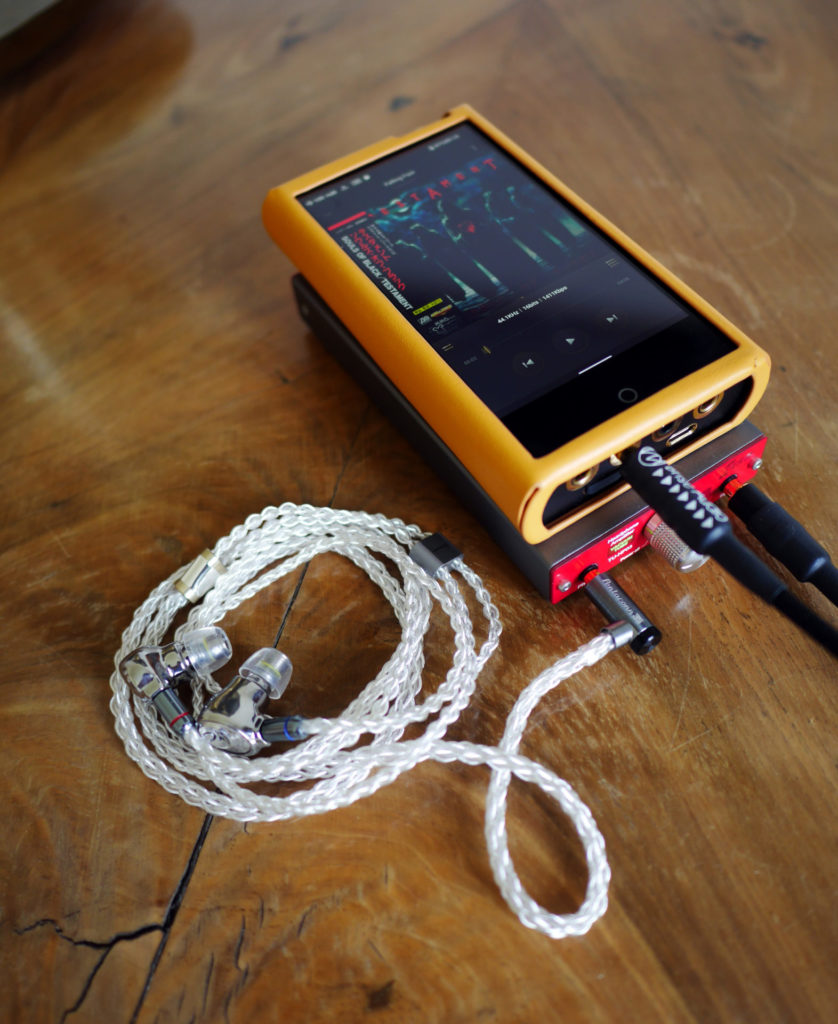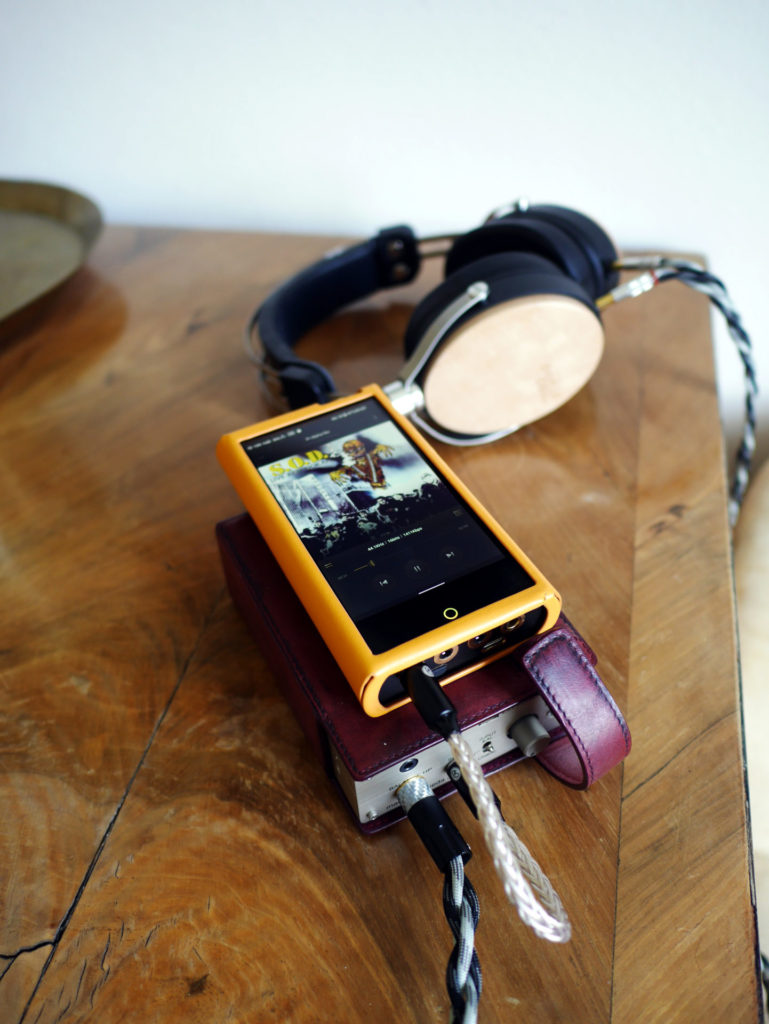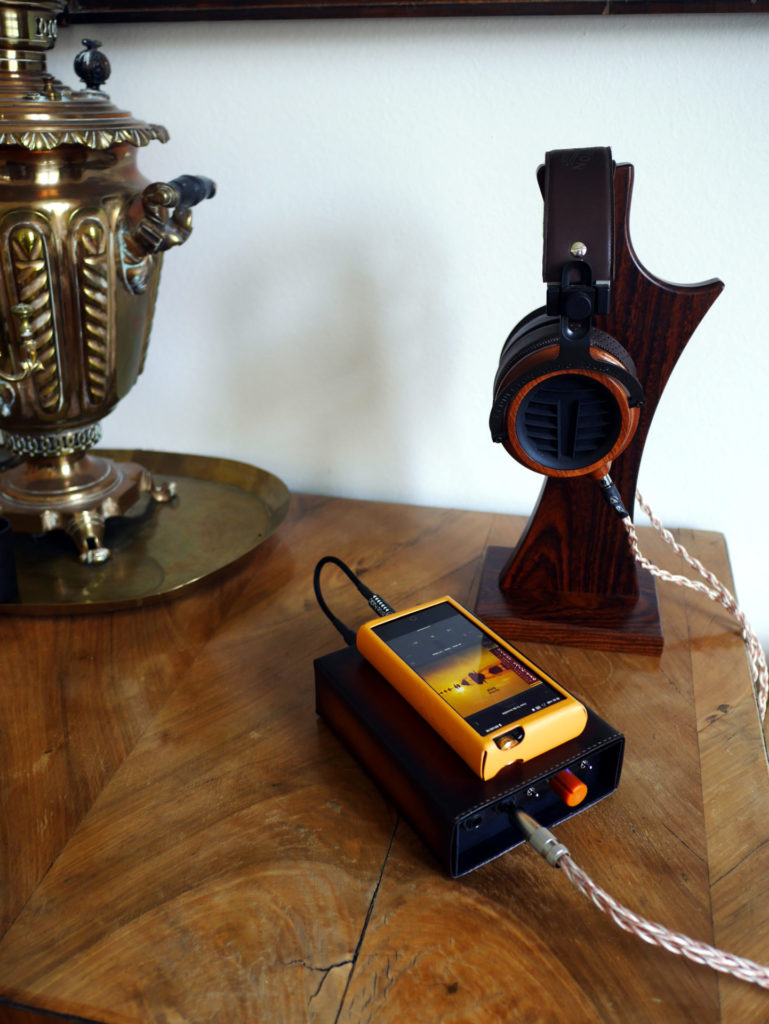[Disclaimer: this review unit was provided by Cayin as part of the N7 EU tour. Big shout out to the most excellent Andy Kong for his generosity].
A 1-Bit DAP?
To 1-bit or not two 1-bit? This is the question the Cayin N7 raises with its latest DAP. You’ll forgive me if I don’t get into the technicalities of this DAC architecture here. As is now widely known (somewhat), what renders the N7 unique is that PCM sources are converted to DSD format. While other DAPs have various upscaling DSP features, from what I understand the N7 is the first DAP to have this architecture as an FPGA based system. What I want to focus on here, however, are the subjective aspects of how this technology sounds. How does the N7 sound? I have owned various Cayin products over the years and would consider myself a fan; the R01 module for the N6ii is what I would also describe as a modern-day classic, so I was especially curious about the N7.

Before I get to this, let me begin with a confession: I am not a streamer, so I’m only interested in the N7 as a local storage device. Let me also add, because I’m a local guy, I’ve inadvertently accumulated too much media over the years, including vast swathes of SACD/DSD media alongside regular FLAC/WAV formats. I have to say, having gone deep into this format rabbit hole, my overall conclusion is that what really matters is the original mastering of the album rather than the format itself. If an album is poorly produced, then there’s nothing that upsampling/converting or downloading in high-res can do to redeem it. In the same measure, a well-produced album can certainly benefit in some cases from DSD format, I think. Finally, it seems to me (as I hear it) that DSD format is suited for some genres more than others; classical, fusion, jazz, soundtracks seem to thrive in this format, but I would not opt to listen to Megadeth in DSD.
Build and Feel
To the N7, first impressions. Build is very sturdy, feels good in the hand, nice weight. It’s large though I wouldn’t exactly take it out and about for a walk, but I don’t see a problem in using it once settled in some café/bar/hotel/office etc. I’m personally really not a fan of having the outputs on the bottom side. I know this is very personal, but this doesn’t make any sense to me and I far prefer the format of the N6ii with the volume on the side and the outputs on the top. The gold volume knob is nice but the resistance is a bit loose and it certainly doesn’t have the premium feel of the Lotoo Paw Gold Touch gold knob. The leather case is less yellow than I anticipated but it’s still quite yellow.

No issues at all with the UI and speed. Everything is very snappy with no lag. I’m using a SanDisk Extreme Pro 1TB card with about 15,000 tracks and everything moves along nicely. Screen is very good. This might be a redundant observation, but it would be nice to have some kind of Roon style indication of what’s going on in the conversion process, at least to confirm which DSD rate is being played. On this point, I largely left the N7 in stock form during my time with it. The difference between class A and AB in amp performance are noticeable but subtle. Class A takes off some edges in the upper mids and adds a little more weight in the lower mids. With respect to the DSD output introduced in the latest FW, I have to confess even with my most transparent gear, I could barely hear any difference.
Sound Impressions
How, finally, does the N7 sound? I would describe the overall N7 timbre has having a natural signature which tilts toward slight warmth. I had read previously that there was some confusion/conflation between the N7 and R2R sounding DAPs, especially R01. It’s been a while since I had the R01, but to my ears, the N7 is overall more forgiving with more of an emphasis in the lower mids.
The overall presentation is smooth, fairly laid back, and basically what one might call “musical.” Bass is fairly well-contained with good texture, mids are for the most part rather linear if not slightly pushed forward, and the upper mids/treble is airy but at times becomes slightly strident when challenged with sharp sounding albums. Nevertheless, I think the appeal of the N7 will be that it tends to act as a good all-rounder for those looking for a nice upgrade from entry level sources, especially when paired with an external amp (see below).
DSD vs. PCM
What about DSD vs PCM? I installed a native SACD copy of “Thriller” alongside a PCM conversion of the same album on the N7. What I found is quite striking: the native DSD copy has much better dynamics, more impactful with a more technically precise presentation. The PCM version, on the other hand, is much softer if not slightly blurrier. I found this to be the case throughout my time with the N7: it excels when playing native DSD in every sense, whereas the PCM version felt arguably weaker and less engaging. I would say this is a big selling point if you’re invested in the SACD eco-system but in terms of being a player for PCM sources, that’ll be a question of taste.

On a technical level, the N7 performs well within its price range. The background is blackish (noir black?) but not on the level of a TOTL DAP where there’s more of an effortless sense of presentation in micro details. Nevertheless, the N7 has a good sense of space and width, which is very engaging. In terms of imaging, layering, and detail retrieval, I find the N7 to perform well but technicalities tend to be rather soft. The same is true of dynamics; on a pair of IEMs like the IE900, the N7 comes into its own as a very capable of source, which does justice to an already dynamic sounding set of IEMs. But pushed with something more demanding like Kennerton’s planar magnetic IEM, the RIG, one has a sense of the limitations of the N7’s amp stage in particular.
Pairings and Synergy
But before I get to that, let me mention briefly pairings. For me, IE900 had the best synergy of the gear I tried: nimble, dynamic, engaging, musical with a very impressive sense of space. I am mostly a headphone user, so was curious about how well the N7 would perform with portable headphones. Results: Audio Technica WP900 perform very well especially with SACD recordings (Weather Report sounded super). The Tago T3-01 from the niche Japanese company also sounded nicely balanced, as did Meze 99, but I would not venture into full-size planar territory with the N7.

Stacking Up
Moving on, my overriding impression of the N7 is that it’s a very fine DAP but it’s held back by its amp performance. This was confirmed to me when I paired it using the very clean LO to a set of portable and desktop amps.
Some brief impressions:
- First amp pairing the Elekit TU-HP03 from the Japanese company. This is a small portable tube amp with swappable op-amps. Even plugging into this small amp, you can get a sense of what the N7 DAC is capable of. The presentation is smoother but also has better control compared to the N7’s own amp. Overall timbre and tonality remain the same, but the TU-HP03 offers a snappier presentation.
- Then I tried with Bakoon’s (Satri Circuit Lab) 5520MK2. Now we’re moving into big boy territory. Background is much blacker, soundstage is wider, dynamics are vastly more refined. Manifestly power is also on another tier, the 5520MK2 capable of driving Kennerton Thror with ease.

- Mass Kobo 428: another Japanese amp, and this one takes the N7 to a whole other level. The pairing is like listening to a completely different DAP. The whole presentation is highly resolving, with crystal clear clarity, exceptional depth, and outstanding transparency. Top recommendation!
- Mass Kobo 433 and Bakoon 5210MK4: continuing this pattern, I then paired with my desktop amps. What I hear is a DAC that is now revealing its true potential, especially with native DSD formats. If you own a N7, you’d be missing out greatly without connecting it to a higher-tier amp.

Comparisons
Finally, some brief comparisons with other sources:
- Acoustic Research AR-M2: this is a sort of “cult” DAP, which is highly venerated and highly sought after. I was suspicious until I owned one (actually two of them) and then believed the hype. It’s a very dynamic sounding DAP with an immensely powerful internal class-A amp. Compared to N7, the M2’s hissy background is even more audible. That said, it has a charm which stands the test of time. N7 is cleaner and performs far better with native DSD formats, though I hear a little more dynamic punch on FLAC/WAV on the M2.
- Mojo 2: Yes, the Mojo 2 is a DAC/amp rather than a DAP, but nevertheless a comparison might be beneficial given how popular the Mojo 2 is. Compared to N7, the Mojo 2 has a more neutral tuning, but with greater transparency, a higher sense of resolution, and more incisive dynamics. I also hear the Mojo 2 to have a background that is even blacker than N7. This may come as a surprise, but my sense is that N7’s appeal is less with technical precision and dynamic engagement, and more with a smooth timbre that is largely devoid of fatiguing properties. Personally speaking, I lean toward the Mojo 2 as a preferred source, but this is a question of taste.
- Lotoo Paw Gold Touch Ti: Ok, unfair comparison. For me, the Ti offers desktop/flagship level performance in a portable package. The N7 is not on this level, but paired with a decent high-end portable amp, the gap becomes more ambiguous.

Conclusion
To sum up what has been a too long set of impressions, the N7 is a very fine DAP, the appeal of which is understandable. It offers a very solid performance with an engaging timbre, a black background, and a very snappy UI. For those with a large SACD/DSD collection, I think it’s an optimal DAP.
If I were to be critical, I would only say that the N7 is somewhat held back by its internal amp performance and soft dynamics, especially within the context of PCM conversion. But the fact that it scales up so well should make it an inviting prospect for those who already have a set of amps waiting to be used.

